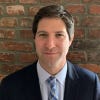Sponsored By
Alternative Investments
Peakline Partners Bill Rudnick, executive managing director
Alternative Investments
Private Markets Investments Firm Cresset Partners Rebrands as Peakline PartnersCresset Partners Investment Firm Rebrands as Peakline Partners
The new name reflects the investment division’s separate identity from $65 billion wealth manager Cresset.















































